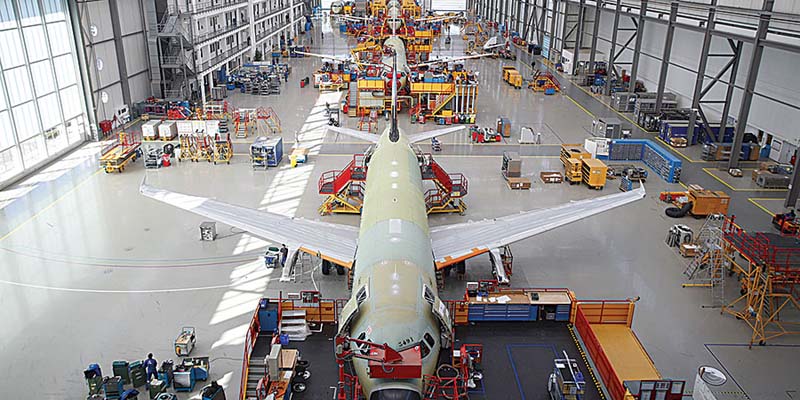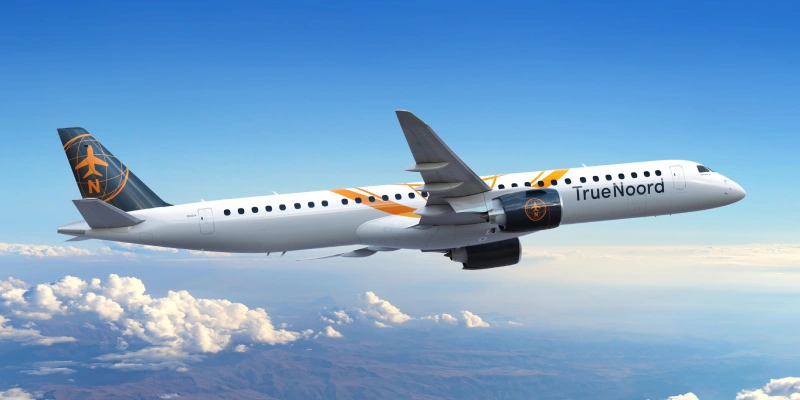Airbus and Boeing are preparing the aerospace industry to drastically increase the monthly production of the next generation of single-aisle aircraft, aiming for up to 100 units per manufacturer. This ambitious goal includes the use of innovative materials such as thermoplastics and robotic assembly techniques to overcome current supply chain challenges, as reported by Reuters.
Despite supply chain difficulties, prolonged waits for new engine generations, and the fact that manufacturers are years away from launching projects to replace their Boeing 737 and Airbus A320 models, both companies are advancing research into materials and processes that could define the next generation of aircraft.
Composites: The Future of Aerospace Construction
Current aircraft like the Boeing 737 and Airbus A320 are primarily made of aluminum using refined methods, a material that has dominated the industry for decades. However, the focus has now shifted to composite materials, which are already widely used in models like the Boeing 787 and Airbus A350 for their ability to reduce weight and improve fuel efficiency.
The challenge lies in the fact that these materials currently require a labor-intensive process in pressurized autoclave ovens, limiting production speed. To overcome this hurdle, Airbus and Boeing are studying new technologies that would allow components to be manufactured more quickly without sacrificing strength or quality.
→ Malaysia Airlines Modernizes Its Fleet with Up to 60 Boeing 737 MAX
Unprecedented Production Rates
At the JEC World fair in Paris, both companies showcased their advances in material research and production. Current studies estimate that the production of these new aircraft could reach 80 units per month for each manufacturer. However, industry sources claim that the real goal is to achieve 100 aircraft per month—a figure that would mean producing a 200-seat aircraft every few hours.
Thermoplastics: Key to Aerospace’s Industrial Revolution
One of the most promising developments in this field is the use of thermoplastics in the construction of fuselages and other structural parts. Unlike traditional thermoset composites, thermoplastics can be remelted and reshaped multiple times, enabling more fluid aerodynamic designs.
“They can be melted and remolded at will,” explained Lukas Raps from the German Aerospace Center (DLR) during the conference.
Another key advantage is that these materials can be welded using advanced methods, such as ultrasonics, instead of rivets, reducing the aircraft’s overall weight. Additionally, the reduced reliance on autoclaves in the manufacturing process could significantly accelerate production.
“There’s no doubt that thermoplastic materials offer opportunities that thermosets cannot provide,” emphasized York Roth, a lead researcher at Airbus in Germany.
Regulatory Challenges and Outlook
Despite the enthusiasm for thermoplastics, transitioning to these materials presents regulatory challenges. Certifying aircraft with structurally welded parts instead of traditional fasteners could be a lengthy and complex process.
Industry sources indicate that, rather than adopting a single technological approach, future aircraft will likely combine different materials and processes to optimize weight, strength, and ease of manufacturing.
For now, neither Airbus nor Boeing has announced immediate plans to launch a new aircraft model, partly due to recent supply chain crises and Boeing’s financial turbulence. However, advances in materials and production suggest that commercial aviation is on the brink of an unprecedented transformation.
Related Topics
Helvetic Airways and Air Côte d’Ivoire to Expand Their Fleets with New Embraer Jets Orders
Embraer Reaches Historic Record with US$31.3 Billion Order Backlog in 3Q25
Embraer Opens Office in New Delhi, India
TrueNoord Places Firm Order for 20 Embraer E195-E2 and Secures Purchase Rights for Up to 30 Additional Jets

Plataforma Informativa de Aviación Comercial con 13 años de trayectoria.




